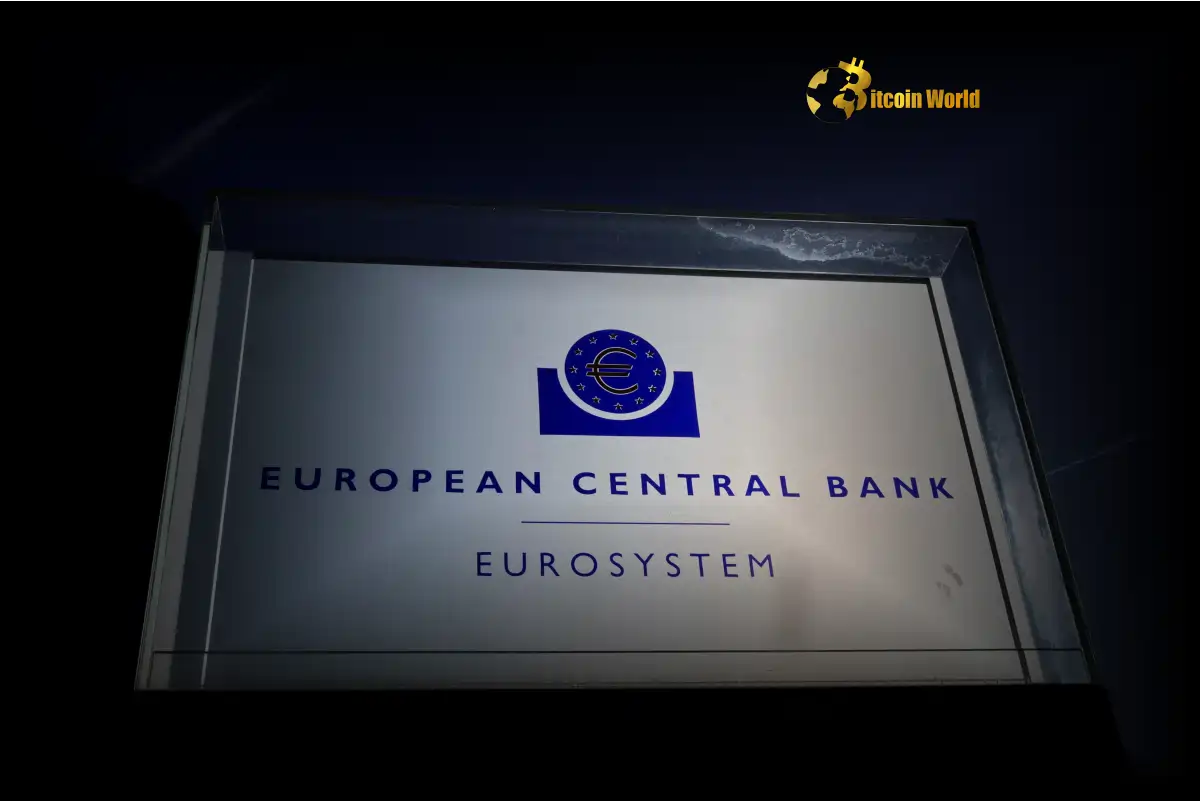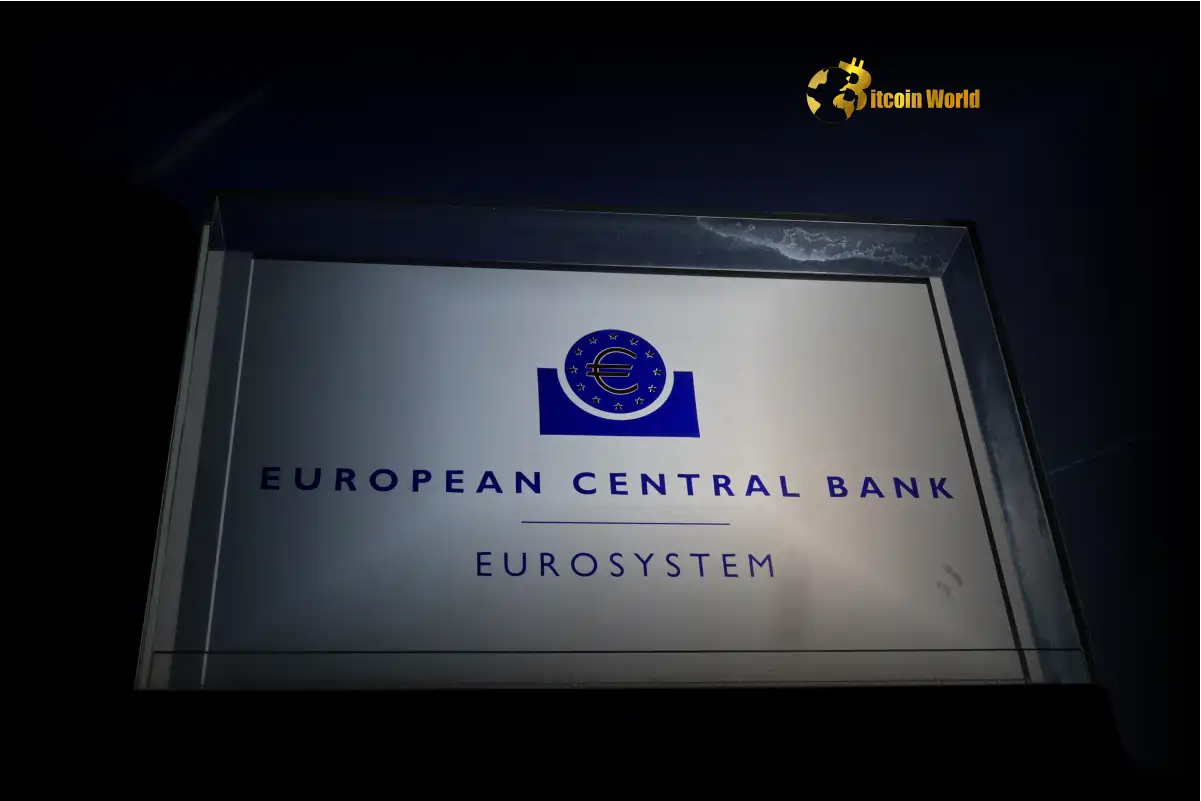BitcoinWorld

ECB Confident: Euro Zone Banks’ Dollar Exposure Secured by Fed Liquidity
In the world of global finance, interconnectedness is key. For those watching the crypto markets, understanding broader economic stability signals is crucial. A recent statement from the European Central Bank (ECB) regarding the dollar exposure of euro zone banks has drawn attention, highlighting the reliance on international central bank cooperation, specifically with the Federal Reserve’s liquidity support mechanisms. This might seem distant from your digital assets, but it speaks volumes about the plumbing of the traditional financial system that still underpins global markets.
What is Dollar Exposure for Euro Zone Banks?
Simply put, dollar exposure refers to the assets, liabilities, or off-balance-sheet items that banks hold or are denominated in US dollars. While euro zone banks primarily operate in Euros, they engage in significant international business, lending to or borrowing from entities that deal in dollars, or holding dollar-denominated securities.
This exposure creates a need for dollars. Banks need dollars to fund their dollar assets, meet dollar-denominated obligations, or simply facilitate transactions for clients who require dollars. If a bank has more dollar liabilities than dollar assets, or if its dollar assets are illiquid, it faces a funding gap. This gap can become problematic during times of market stress when accessing dollars becomes difficult or expensive.
Why Does Dollar Exposure Matter to Stability?
Significant dollar exposure among euro zone banks, if not properly managed, can pose a systemic risk. Here’s why:
- Funding Risk: If banks cannot access the dollars they need, they might struggle to meet obligations, potentially leading to solvency issues.
- Market Contagion: Problems at one bank due to dollar funding stress can quickly spread to others, impacting the broader financial system.
- Economic Impact: A banking crisis stemming from funding issues can tighten credit conditions, hurting businesses and individuals.
- Global Spillover: Given the dollar’s role as the world’s primary reserve currency, dollar funding problems in one major financial center can have global repercussions.
Ensuring banks can access dollars, especially during crises, is vital for maintaining financial stability in the euro zone and globally.
ECB’s Confidence in Fed Liquidity
The core of the ECB’s recent message is confidence. The ECB has expressed strong confidence in the ability and willingness of the Federal Reserve to provide dollar liquidity when needed. This isn’t just a polite statement; it reflects the operational reality of global central bank cooperation.
This confidence is largely based on established mechanisms designed to prevent dollar funding crunches outside the US. The primary tool here is the network of central bank liquidity swap lines.
How Does Fed Liquidity Support Work Via Swap Lines?
Central bank liquidity swap lines are agreements between two central banks (like the Fed and the ECB) to exchange currencies. Here’s a simplified breakdown:
- The foreign central bank (e.g., ECB) draws on the swap line, receiving a specified amount of US dollars from the Fed.
- In exchange, the foreign central bank provides an equivalent amount of its currency (e.g., Euros) to the Fed, using the prevailing market exchange rate.
- The foreign central bank then lends these dollars to banks in its jurisdiction that need dollar funding. These loans are typically collateralized and short-term.
- When the swap matures, the foreign central bank returns the dollars to the Fed (at the original exchange rate) plus interest.
- The Fed returns the foreign currency to the foreign central bank.
This mechanism allows the ECB to provide dollars to euro zone banks facing funding pressures without needing to draw down its own foreign exchange reserves or rely on potentially frozen private markets. It acts as a crucial backstop for dollar exposure.
Historical Precedent and Examples
The importance of these swap lines became acutely clear during the 2008 global financial crisis. As credit markets seized up, non-US banks struggled to access dollars. The Federal Reserve reactivated and expanded its network of swap lines with other major central bank liquidity providers, including the ECB, to ease the dollar funding stress. This action was widely credited with helping to prevent a more severe global banking crisis.
While swap lines were scaled back after the crisis, they were reactivated and heavily utilized again during the market turmoil in March 2020 at the onset of the COVID-19 pandemic, demonstrating their continued relevance as a vital tool for global financial stability.
Benefits of This Central Bank Coordination
The confidence the ECB has in the Fed’s liquidity support highlights several key benefits:
- Enhanced Stability: Provides a safety net against dollar funding shocks, reducing the risk of bank failures or fire sales of assets.
- Increased Confidence: Reassures markets that central banks are prepared to act in concert to address liquidity issues.
- Smoother Market Functioning: Helps ensure that essential dollar-denominated transactions and funding markets continue to operate even under stress.
- Reduced Spillover Risk: Limits the potential for funding problems in one region to negatively impact others.
Are There Any Challenges or Concerns?
While swap lines are powerful tools, they aren’t without potential considerations:
- Moral Hazard: Some argue that easy access to central bank liquidity could reduce banks’ incentives to manage their own funding risks prudently.
- Reliance: Banks and central banks could become overly reliant on these backstops rather than developing robust private market solutions.
- Political Factors: While generally technical, the availability and terms of swap lines could theoretically be influenced by political considerations, though they have historically been used based on financial stability needs.
Despite these points, the prevailing view among central bankers is that the stability benefits significantly outweigh these potential drawbacks, particularly during crises.
Actionable Insights for Market Watchers
What does the ECB’s statement and the existence of Fed liquidity support mean for you, particularly if you’re interested in cryptocurrencies or broader financial markets?
Understanding these mechanisms provides insight into the underlying stability of the traditional financial system. While crypto offers an alternative, its price and adoption are still influenced by macro liquidity and confidence levels in traditional finance. The fact that major central banks like the ECB and the Fed have robust systems in place to manage dollar funding stress in euro zone banks is a positive signal for overall systemic stability.
It suggests that a key vulnerability exposed in past crises – the lack of reliable dollar funding outside the US – is being actively managed through international cooperation. This doesn’t eliminate all risks, but it mitigates a significant one.
Compelling Summary
The European Central Bank’s expression of confidence in the Federal Reserve’s capacity to provide dollar liquidity underscores the strength of international central bank cooperation. This mechanism, primarily through swap lines, is a vital tool for managing the dollar exposure of euro zone banks, preventing potential funding crises that could have wider financial repercussions. While challenges exist, the ability of central banks to supply necessary central bank liquidity, especially dollars, is a crucial element of global financial architecture, providing a layer of security that benefits the entire system, including indirectly, the broader market environment in which digital assets operate.
To learn more about the latest Forex market trends, explore our article on key developments shaping US Dollar liquidity.
This post ECB Confident: Euro Zone Banks’ Dollar Exposure Secured by Fed Liquidity first appeared on BitcoinWorld and is written by Editorial Team





